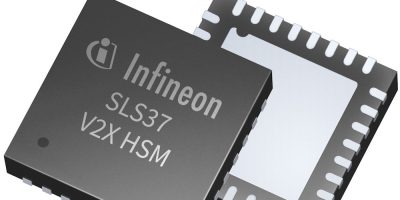Safety and security-critical Integrity real-time operating system (RTOS) for RISC-V means that electronics manufacturers can build and deploy safety and security-critical RISC-V systems based on the Integrity software foundation already used in cars, aircraft, trains, secure phones, and surgical devices. Integrity is now integrated with RISC-V processor hardware reference boards from Microchip and SiFive and processor IP (intellectual property) from SiFive. According to Green Hills, this support will enable device manufacturers to reduce the time, cost and complexity of developing and deploying critical software for automotive, military, IoT and industrial solutions based on RISC-V processor architecture.
Integrity is based on a separation kernel architecture that provides resource guarantees, hard real-time determinism and was designed from the beginning to achieve maximum security and safety.
According to Green Hills, the Multi debugger has advanced C/C++ compilers and analysis tools to find even the most difficult bugs on complex RISC-V SoCs comprised of multiple heterogeneous cores where the RISC-V core is either the main general purpose CPU or a secondary special-purpose acceleration core alongside a CPU, such as an Arm core.
Integrity can also help designers develop production-ready systems on leading RISC-V reference boards to meet production requirements for performance, memory efficiency and functional safety (FuSa) through Integrity and Multi. Both have functional safety certifications for automotive (ISO 26262), industrial systems (IEC 61508) and railway (EN 50128).
“The integration of safety and security-critical RTOS, Integrity, into SiFive HiFive products is an exciting step forward for the RISC-V and SiFive ecosystem,” said Dr. Yunsup Lee, CTO, SiFive, and co-inventor of RISC-V.
“Having Green Hills Software bring its full safety and security portfolio to customer applications using PolarFire SoC is a significant milestone for the Mi-V RISC-V ecosystem and to the larger RISC-V ecosystem,” said Tim Morin, technical fellow and marketing at Microchip Technology. “The addition of safe and secure software tools will greatly enable the ability of our joint clients to innovate with a free and open ISA,” he added.
The new Integrity support adds to the range of Green Hills products that are optimised for RISC-V and already in use by customers, including Integrity RTOS for multi-core embedded systems, u-velOSity RTOS, Multi IDE, a C and C++ development environment for multi-core debugging, Green Hills Probe v4, for multi-core hardware, low-level debugging, and trace-powered analysis tools.
The Integrity RTOS, Multi IDE and the Green Hills probe are available now to early-access customers for the Microchip PolarFire Icicle Kit and the SiFive HiFive Unmatched board.







